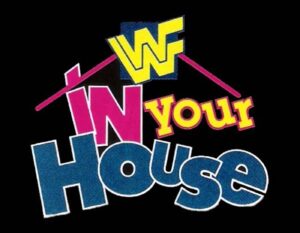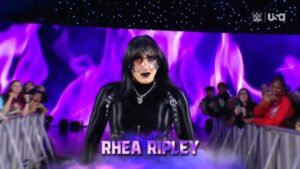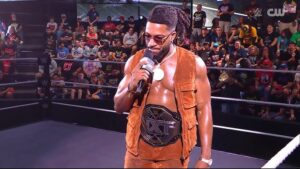Western Ohio was struck by at least three tornadoes overnight on Monday night, with damage ravaging multiple cities, as well as hitting parts of Indiana. One of the casualties of the treacherous paths of the multiple twisters was Hara Arena, a legendary wrestling venue in the Midwest territory for over 50 years.
Many great shows indeed, sad. RT @indianapolis420: .@THETOMMYDREAMER ,@PJPOLACO From last night's tornado in Dayton Ohio. Man there was some kick ass shows from there. #ecw #OHwx #DaytonTornado pic.twitter.com/2lU1erPnfP
— Bill Yanney (@indybill23) May 28, 2019
Opened in 1964, Hara Arena in Trotwood, Ohio (part of Metropolitan Dayton) was founded by the Wampler Brothers, Harold and Ralph (Hara is actually an amalgamation of their first names HArold and RAlph). Originally starting as the Wampler Ballroom, it was expanded to include an arena in 1964. Both Wampler brothers were Shriners, and the arena was initially built to offer a Dayton-area stop for The Shriner’s Circus, but it would turn out to be a squared ring attraction that became a generations-deep tradition at the arena more than a three ringed one.
A year later in 1965, The Sheik (Ed Farhat) from Detroit began to expand his Big Time Wrestling into Ohio and began running events at the Hara Arena. His first card on November 6, 1965 featured The Sheik vs Bobo Brazil in the Main Event. Farhat would use other venues in the Dayton area as well, but Big Time featured cards at the Hara Arena, including TV tapings, throughout much of the 1960s and 1970s.

As Farhat’s Big Time Wrestling began to lose ground in the territorial wars expanding by the end of the 1970s and in the early 1980s, the Hara Arena became a frequent stop for Georgia Championship Wrestling (GCW). GCW ran their first Hara Arena card on January 4, 1982, with Tommy Rich vs The Masked Superstar in the Main Event, on a card that featured a lot of GCW’s “B-Team” at the time, including “Bullet” Bob Armstrong, “Gorgeous” Jimmy Garvin, and French Angel. Their return that spring saw a bigger line-up that featured Dusty Rhodes, Roddy Piper, Tommy Rich, Stan Hansen and more. It wasn’t until February of 1983 they finally got an NWA World’s Heavyweight Championship match, when Ric Flair defended his ten pounds of gold against Paul Orndorff.

In October of 1983, WWF began running shows inside GCW’s Ohio claimed territory, including their first show at Hara Arena featuring Andre the Giant. GCW fought back early the next year, but by 1984, WWF’s Vince McMahon had purchased GCW and taken over Ohio for his own, including the licensing for Hara Arena. WWF held house shows at Hara Arena throughout the 1980s and 1990s, including TV tapings for WWF Superstars and WWF Wrestling Challenge, with their final event a Raw House Show in 2006.
As WWF got bigger and bigger, their hold on Hara Arena slowed and in 1995, World Championship Wrestling (WCW) made their Hara debut with that year’s Great American Bash PPV, that saw Ric Flair face Randy Savage in the Main Event. It also saw Sting defeat Meng (Haku) for the WCW United States Championship and The Renegade beat Arn Anderson for the WCW Television title. WCW would return to Hara Arena multiple times for house shows and Monday Nitro broadcasts through 2000, with their last PPV at the Hara being the WCW/nWo Souled Out PPV in 1998.
The same year WCW held its final PPV at the Hara Arena, upstart Extreme Championship Wrestling (ECW) held their first one, as the legendary Heatwave ’98 called Hara home. In the Main Event, Tommy Dreamer, Sandman & Spike Dudley faced off against the rest of the Dudley Boyz squad, in a PPV that saw a phenomenal card including Rob Van Dam & Sabu defend their ECW World Tag Team titles against Hayabusa & Jinsei Shinzaki (Hakushi in WWF), Masato Tanaka vs Mike Awesome, Chris Candido vs Lance Storm, and Jerry Lynn vs Justin Credible. ECW would hold Heatwave ’99 at Hara the next year, as well as several TV tapings, holding their final card in October of 1999 at the historic venue.
In April of 2012, Ring of Honor would extend Hara Arena’s involvement in pro wrestling history’s, by holding Rising Above 2012 at the arena. The Trotwood faithful would be treated to matches from the likes of Kevin Steen (Kevin Owens), El Generico (Sami Zayn), Kyle O’Reilly, Jay Lethal, The Briscoes, and a Main Event of Davey Richards defending the ROH World Championship against Adam Cole.

The final major wrestling card at the Hara Arena was held only months later, when TNA/IMPACT Wrestling presented a house show in July of 2012, that saw Austin Aries defend the TNA World Heavyweight title against Bobby Roode, adding yet another company and World title match to the arena’s storied halls. Smaller indie promotions, including Dayton’s American Revolution Wrestling (ARW) and Cleveland’s National Wrestling Federation (NWF), would continue to run special events nearly up to the arena’s eventual closure. The Hara Arena was officially closed down in 2016.

While it had been years since a ring bell sounded in the Hara Arena, but it’s legacy as one of the Midwest’s iconic venues has endured from the territories of the NWA to WWF, from WCW to ECW, from ROH to IMPACT Wrestling, and now forces of nature have finally written the final chapter in one of pro wrestling’s hallowed grounds.
Stay tuned to the Last Word on Pro Wrestling for more on this and other stories from around the world of wrestling, as they develop. You can always count on LWOPW to be on top of the major news in the wrestling world, as well as to provide you with analysis, previews, videos, interviews, and editorials on the wrestling world.






